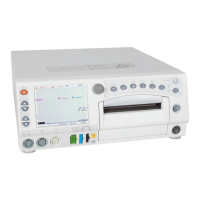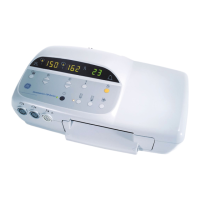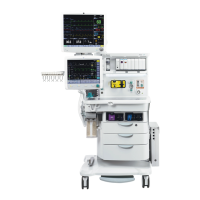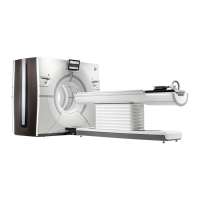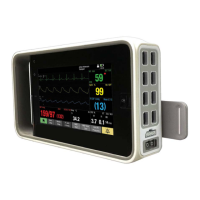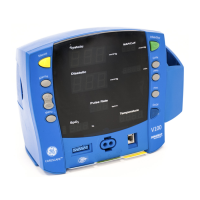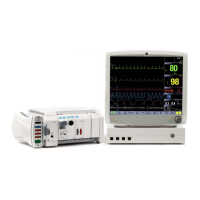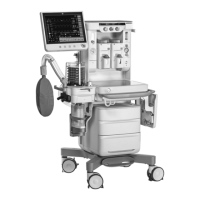8-8 250cx Series Maternal/Fetal Monitor Revision C
2036946-001
Maternal Non-Invasive Blood Pressure Monitoring: NIBP Monitoring
NIBP Done Volume
This field sets the volume of the sound emitted at the completion of each blood
pressure determination. As you adjust the volume, a sample tone sounds.
Alarms
These fields adjust the high and low alarm limits for maternal systolic, diastolic, and
mean arterial pressures, as well as for MHR/P—in increments of 5 mmHg (0.7 kPa)
or 5 bpm. The selectable values are listed in “Maternal NIBP Setup Screen,” on
page 8-7. The factory default settings are listed in Appendix A, “Factory Defaults”.
Alarm Volume
This field controls alarm volume for all maternal alarms.
NIBP Monitoring
Checklist
1. The NIBP hose is securely inserted into the NIBP connector on the monitor.
2. A cuff appropriate for the limb size has been selected.
3. Cuff is properly placed on patient and connected to the NIBP hose.
4. Tubes between the cuff and the monitor are not kinked or blocked.
Patient Preparation
Cuff selection and application are important. Inappropriate selection or improper
application of the cuff will result in erroneous measurements.
WARNING
The system is designed for use only with dual-hose cuffs and
tubing.
Do not place the cuff on a limb being used for A-V fistulas,
intravenous infusion or on any area where circulation is
compromised or has the potential to be compromised.
1. Connect the air hose to the NIBP port on the front of the monitor. Make sure that
the hose is not kinked or compressed.
2. Choose the appropriate blood pressure measurement site. Because normative
values are generally based on this site and as a matter of convenience, the upper
arm is preferred. When upper arm size or shape or the patient’s clinical
condition or other factors prohibit use of the upper arm, the clinician must plan
patient care accordingly, taking into account the patient’s cardiovascular status

